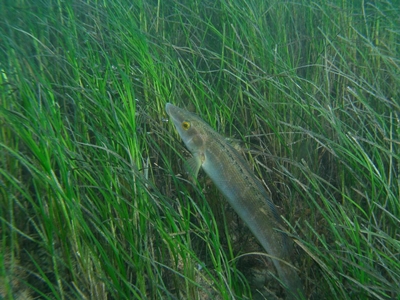General Description
Body long, slender, with long-based low dorsal and anal fins; snout long, pointed; teeth in jaws fused. Juveniles and females greenish with a silver stripe along the sides, males bluish with faint bars or markings on the sides and a blue area around the anus. To 40 cm.
Biology
Although relatively common, this well-camouflaged species is rarely seen. It is sometimes taken as bycatch in commercial nets and is occasionally taken by anglers.
Habitat
In bays, harbours and along the coast, usually in seagrass beds and on shallow reefs with good algal cover, in depths of 1-15 m.
Reefs
Seagrass meadows
Distribution guide
Southern Australia.
Species Group
Fishes › Wrasses, rock whitings and allies
Depth
Water Column
Max Size
40 cm
Commercial Species
Yes
Global Dispersal
Native to Australia
Conservation Status
- DSE Advisory List : Not listed
- EPBC Act 1999 : Not listed
- IUCN Red List : Least Concern







